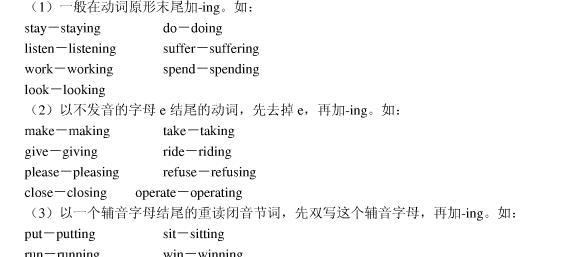在英语中,有些词后面需要跟动词ing形式,这类词被称为“动名词前置词”。常见的动名词前置词包括介词后的动名词(如"by doing"、"without doing"、"after doing"等)、形容词后的动名词(如"interested in doing"、"good at doing"、"famous for doing"等)和名词后的动名词(如"shopping"、"swimming"、"reading"等)。这些短语通常用来表示动作的时间或方式、描述特点或能力、或表示某种活动或爱好。

1. 介词+动名词
许多介词后面需要跟动名词形式,例如,“by doing”、“without doing”、“after doing”等等。这类短语通常表示动作发生的时间或方式。
例如:
- By doing exercise every day, you can improve your health.(每天做运动,你可以提高健康水平。)
- Without studying, you cannot pass the test.(不学习,你无法通过考试。)
- After finishing his homework, he went to bed.(做完作业后,他去睡觉了。)
2. 形容词+动名词
有些形容词后面需要跟动名词形式,例如,“interested in doing”、“good at doing”、“famous for doing”等等。这类短语通常用来描述人或事物的特点或能力。
例如:
- She is interested in learning new things.(她对学习新事物很感兴趣。)
- He is good at playing basketball.(他擅长打篮球。)
- China is famous for producing tea.(中国以生产茶叶而闻名。)
3. 名词+动名词
有些名词后面需要跟动名词形式,例如,“shopping”、“swimming”、“reading”等等。这类短语通常表示某种活动或爱好。
例如:
- I enjoy shopping with my friends on weekends.(我喜欢周末和朋友一起逛街。)
- She is good at swimming.(她游泳游得很好。)
- He spends most of his free time reading books.(他大部分空闲时间都在读书。)
